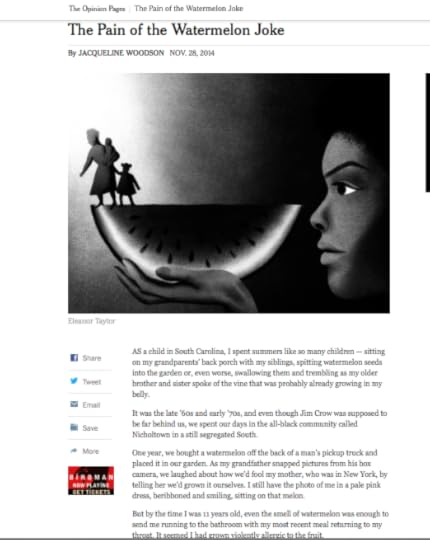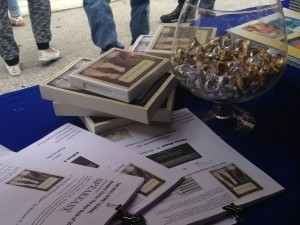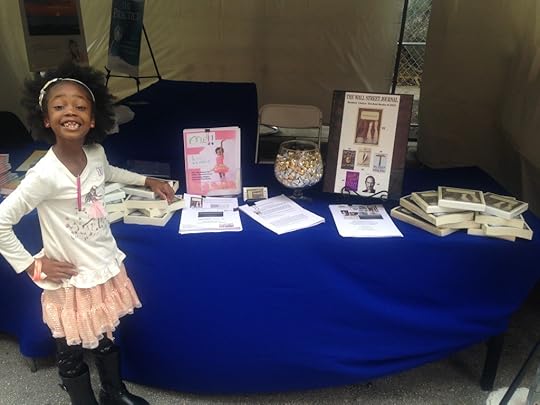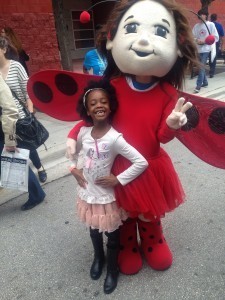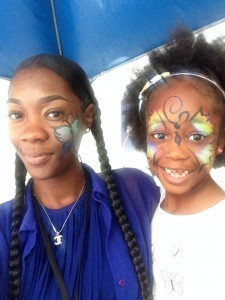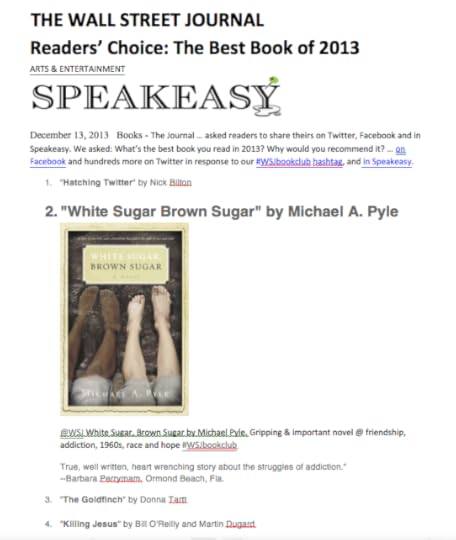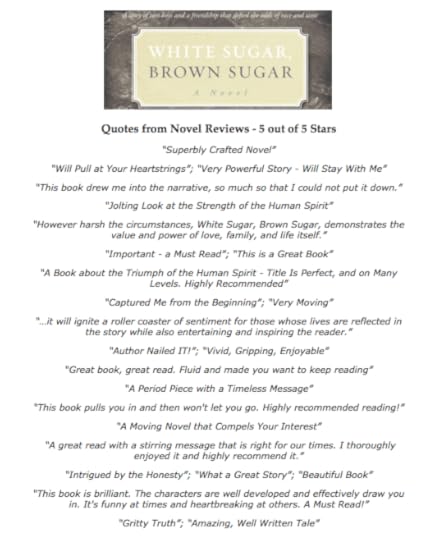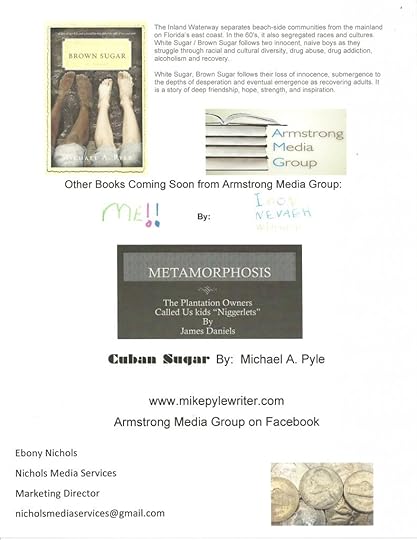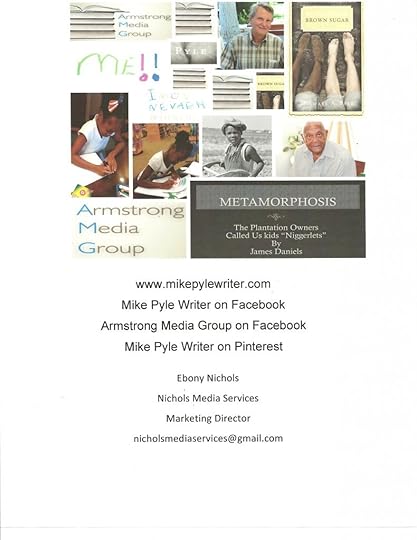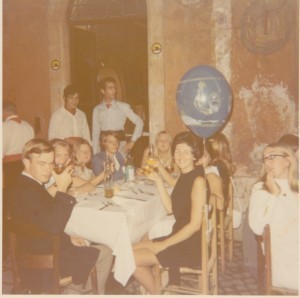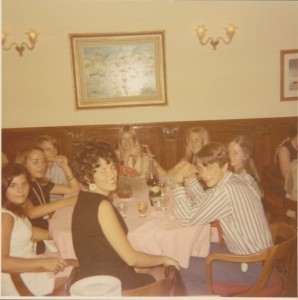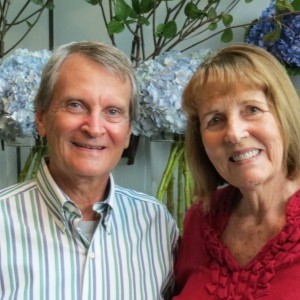Michael A. Pyle's Blog, page 172
February 24, 2015
Inferno at Sea – Stories of Death and Survival Aboard the Morro Castle – by Gretchen F. Coyle and Deborah C. Whitcraft
Prior to coming to the Havana International Book Fair, as I researched to figure out who was speaking when and where, I read about two American authors, whose book was being featured this year. So I went to their talk. The presentation prior to theirs was not finished on time, because one of the recently released members of the Cuban Five was talking. So, standing outside the door in the hot sun (the first time it was actually hot during this week) I got to learn all about the authors, their current book, how they got invited, and their past and future works. Both authors were delightful, interesting and engaging, and they gave me a signed copy of their book just because I write and had gone to listen to them. The book is called Inferno at Sea. It is a non-fiction account of a tragic sinking of a ship named Morro Castle, after El Morro, the fort where the majority of events of the Havana International Book Fair take place. 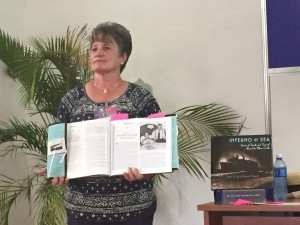
I learned that the connection of the ship to Havana was that Havana was its weekly destination, and it many passengers and crew were Cuban citizens. I learned that it actually burned off the coast of New Jersey. Gretchen Coyle and Deborah Whitcraft are maritime historians, and Deborah has a museum named New Jersey Maritime Museum in Beach Haven, New Jersey, full of artifacts, writings, historic pieces and information about many historical matters. They came to Cuba to see the book fair and perform research previously, the same year I first attended, in 2011. While they had sought information about survivors and facts from U.S. records, what they finally received was insufficient and heavily redacted.
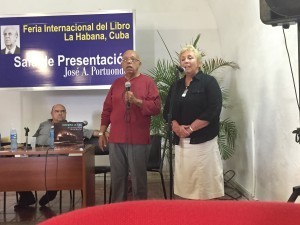 They found significantly more information about the ship and passengers from Cuban records, and even the day of the talk discovered a plethora of details and many more passenger names at the National Archives in Havana. One of the passengers, Franz de Beche, who was a famous Cuban swimmer, gave away several life jackets to young women, saying that he could swim, jumped into the water holding hands with one, but disappeared. It is believed he may have been sucked into the propellers. There is a sports arena named after him. He is considered a hero in Cuba.
They found significantly more information about the ship and passengers from Cuban records, and even the day of the talk discovered a plethora of details and many more passenger names at the National Archives in Havana. One of the passengers, Franz de Beche, who was a famous Cuban swimmer, gave away several life jackets to young women, saying that he could swim, jumped into the water holding hands with one, but disappeared. It is believed he may have been sucked into the propellers. There is a sports arena named after him. He is considered a hero in Cuba.
The authors have interviewed a number of passengers, and family members of passengers who died. In some cases the authors have provided information to family members that they were unable to learn from other sources. 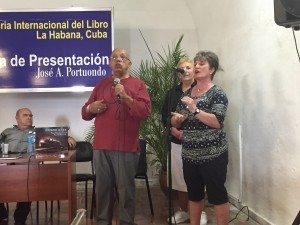
One passenger who is over a hundred years old, and lived in Daytona Beach, Florida, traveled north to meet the authors and be interviewed.
Now, with the new information they acquired on this trip, they may write a second volume of the book, with descriptions of more people.
The authors have the support of well-known Cuban historian, Ciro Biancho Ross, (the man in the gray shirt who presented a lengthy introduction). They introduced me to him, and I talked to him again the following day. i learned from several Cubans that he really is probably the most famous historian in Cuba, and has written a number of well-respected books.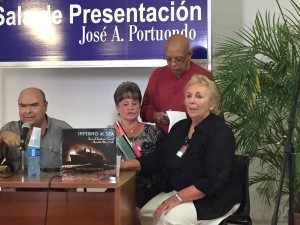
You won’t believe the photographic evidence of the size of the berths and common areas in those days, and the real wooden furniture that looks like it’s in a hotel, not on a ship.
The book is full of clear and descriptive photographs, and devotes chapters to the ship, the trip, individual heroes, deceased passengers, surviving passengers, all along with some mystery and intrigue.
I read the whole book while sitting in the Jose Marti airport in Havana yesterday.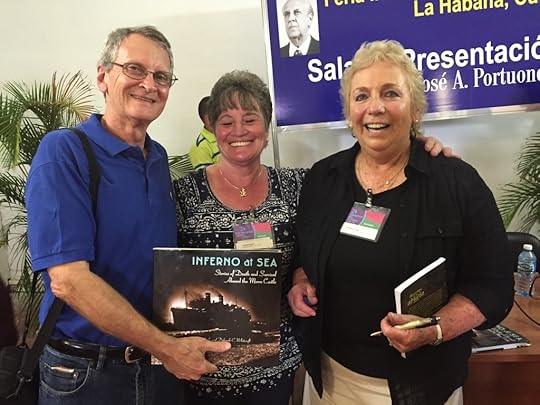
November 30, 2014
The Pain of the Watermelon Joke
Jacqueline Woodson, author of National Book Award winner “Brown Girl Dreaming”, wrote an article in op-ed in the New York Times, published November 29, 2014, in which she says, “In a book I found at the library, a camp song about a watermelon vine was illustrated with caricatures of sleepy-looking black people sitting by trees, grinning and eating watermelon. Slowly, the hideousness of the stereotype began to sink in. In the eyes of those who told and repeated the jokes, we were shuffling, googly-eyed and lesser than.” Thanks to my friend, John Williamson of New York for posting this important piece on his page. Read it. And think about it.
http://www.nytimes.com/2014/11/29/opinion/the-pain-of-the-watermelon-joke.html?src=me&_r=0
November 24, 2014
Drug Addiction – Different Now Than in the 60′s & 70′s?
Readers are often shocked by the description of drug abuse and addiction in White Sugar, Brown Sugar. It does not surprise me at all that this kind of activity is foreign to most. I wrote the book in order to relate things that I feel are important to people who haven’t experienced it directly.
Many families have someone who has suffered from drug abuse, addiction and alcoholism. And they thank me for showing things that a non-addict or non-alcoholic would not realize.
I have met many young people in recent years that are suffering from exactly the same drugs and in exactly the same way that I described in W.S.B.S. Just as the topic is foreign to people of my age, it is probably also foreign to most young people. But the problem persists, in almost the same way as we experienced in the 60s and 70s.
The Economist has posted an article titled, “The Great American Relapse – An Old Sickness has Returned to Haunt a New Generation.” which covers this exact issue.
In the article, the writer distinguishes the kind of people that one would normally think of as a heroin addict, and shows that addiction can afflict anyone, even innocent-looking, people from various social classes. Regarding the title of the article, I would say, the “old sickness” is not really returning. It never left.
This is the beginning of the article from the Economist (and other publications):
“The Great American Relapse – An old sickness has returned to haunt a new generation
Nov 22nd 2014 | DENVER
PICTURE a heroin addict. “A bum sitting under a bridge with a needle in his arm, robbing houses to feed his addiction,” is what many people might imagine, believes Cynthia Scudo. That image may have been halfway accurate when heroin first ravaged America’s inner cities in the 1960s and 1970s. But Ms Scudo, a smartly dressed young grandmother from a middle-class Denver suburb, knows that these days it is not always like that. Until not so long ago, she was a heroin addict herself.
The face of heroin use in America has changed utterly. Forty or fifty years ago heroin addicts were overwhelmingly male, disproportionately black, and very young (the average age of first use was 16). Most came from poor inner-city neighbourhoods. These days, the average user looks more like Ms Scudo. More than half are women, and 90% are white. The drug has crept into the suburbs and the middle classes. And although users are still mainly young, the age of initiation has risen: most first-timers are in their mid-20s, according to a study led by Theodore Cicero of
The spread of heroin to a new market of relatively affluent, suburban whites has allowed the drug to make a comeback, after decades of decline. Over the past six years the number of annual users has almost doubled, from 370,000 in 2007 to 680,000 in 2013….”
White Sugar, Brown Sugar at Volusia County Library Event
I was supposed to participate in an event featuring local writers and their books this week at the City Island – Daytona Beach Library, hosted by Deborah Shafer. But I was unable to attend due to a health issue. Ebony Nichols, as Marketing Director for my publisher, Armstrong Media Group, attended in my absence, and reported that it was well attended.
Ronnie Hart, who, along with her other many accolades, is the Regional Director and Writing Group Leader for the Florida Writer’s Association, was the speaker for the event.
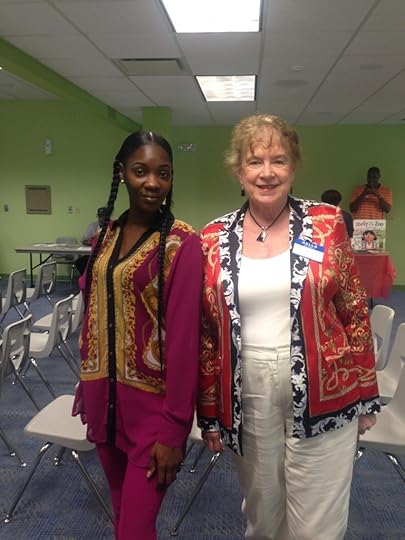 Photo is of Ebony and Veronica Hart.
Photo is of Ebony and Veronica Hart.
— at City island Library.
White Sugar, Brown Sugar Attends Miami Book Fair International
I have been interested in the Miami Book Fair International for years. In 2013, I attended, but not as a participant. Marc Bernier, who interviewed me on his radio show, and for his ROKU and UTube interviews called, “Book Marc” strongly suggested I attend.
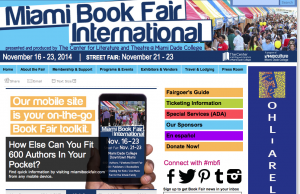 I signed up and got a table, but had a health issue that sidelined me. I was planning to take Ebony Nichols, of Nichols Media Services, who works with the publisher of White Sugar, Brown Sugar, and her daughter, Imon Neveah Williams, a six-year-old who we are helping to write an inspirational interactive book.
I signed up and got a table, but had a health issue that sidelined me. I was planning to take Ebony Nichols, of Nichols Media Services, who works with the publisher of White Sugar, Brown Sugar, and her daughter, Imon Neveah Williams, a six-year-old who we are helping to write an inspirational interactive book.
Ebony and Imon attended for me, and Imon drew in the crowds.
Imon promoted her book, ME!!, which is not available yet, but will be soon, as well.
Imon met another young author, a 12 year old, and she bought his book.
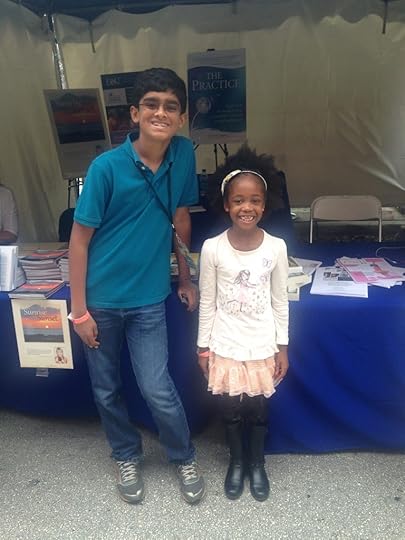 Imon had a great time, and Ebony joined in the fun.
Imon had a great time, and Ebony joined in the fun.
November 21, 2014
White Sugar, Brown Sugar – Materials at Miami Book Fair
White Sugar, Brown Sugar at Miami Book Fair International
The Miami Book Fair International Book Fair is this week in Miami. The public display is on downtown Miami Streets starting today, November 21, 2014 through Sunday. I’ve been looking forward to and counting on having a table on Writers’ Row there for the first time. But, because of a health problem, I cannot go. So our marketing director, Ebony Nichols of Nichols Media Services, and her daughter, Imon Neveah Williams, author of soon-to-be published ME!!, are attending in my absence. They promise to send us some photos to post.
 W
W
September 23, 2014
Nancy Goldman – a Positive Influence in My Life
In the Acknowledgements area of White Sugar, Brown Sugar, I listed a number of people who have had positive influence in my life. One such person is Nancy Goldman. Mrs. Goldman, as we called her when I knew her, was a teacher at Seabreeze High School, Daytona Beach, Florida. I never knew her at the school, and never took a class from her.
But, in the summer between junior and senior year, I learned of a school trip to Europe. I don’t know what possessed me to go, as I had never been anywhere, and I was definitely not one of the studious, good kids. I usually skipped school, orattended under the influence, so I don’t even know how I found out. But it sounded like fun, so I convinced my father to let me go.
This was not long after my drug possession arrest, when I was fifteen, which was reported on local radio and newspaper. Everybody in the school knew about it.
I signed up. We had a couple of meals at the home of the chaperone, none other than Mrs. Goldman. I also met her son, Trey, at that time. He was just a kid, but he was there during our planning meals. He’s now a lawyer, as am I.
Mrs. Goldman was an excellent chaperone, teacher, counselor and role model during our trip. For me, she was a positive influence at a time when I needed one. My parents had divorced; my mother’s house was a den of iniquity; I was a serious drug abuser; I did not respect or listen to stupid adults, and they all were stupid.
The Beautiful adult in the two dinner photos, is, of course, Nancy Goldman: These photos came from Donna Anderson Beemer, who is seated to my right in the first photo, and to my left in the second. I’m wearing a light blue coat in the first and a light blue shirt in the second:
I kept escaping, because I found that I could drink alcohol and drink to excess in every country we visited, smoke marijuana in the Paradiso Club in Amsterdam, etc. I recall that I didn’t feel like going to a museum one day, because I knew a girl from Savannah who was playing sick, and we had wine and weed, and were going to have a little fun. One of my classmates told me that poor Mrs. Goldman was concerned all day long about what I was up to. I put her through far more anxiety than anybody else did. She was afraid I was addicted. When she found out I bought a bunch of pipes and switchblades, she convinced me not to try to take them back to the U.S. She caught me and others in various stages of undress, drunk on wine, on the roof of a hotel in Florence, and she graciously and kindly put her foot down, without causing more of a scene than was necessary.
Donna and I:
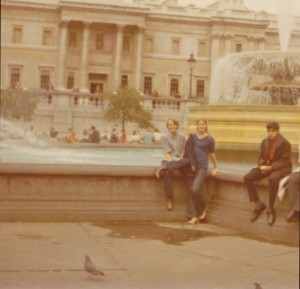
Donna and Somebody and I:
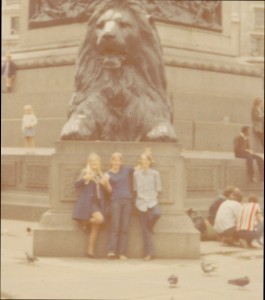
Rooftop Drunkenness: Mrs. Goldman was not at fault. But she caught us all. She was NOT HAPPY. :)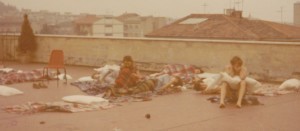 Mrs. Goldman was a solid, caring, knowing, good influence on all of us, but particularly on me. I would like to say that I straightened up and never veered again, but that’s not true. Still, later, when I was straightening up, I thought of her influence as part of my getting on the right track
Mrs. Goldman was a solid, caring, knowing, good influence on all of us, but particularly on me. I would like to say that I straightened up and never veered again, but that’s not true. Still, later, when I was straightening up, I thought of her influence as part of my getting on the right track
Back to her son, Trey the lawyer. He and I are on the same committee of lawyers for the Florida Bar. He took his mother to a meeting in Chicago last week. I had the great honor and pleasure of seeing her after all these years, since I was 17, and catching up.
September 19, 2014
Publishing Workshop
Steve Harvey Show in Chicago
You may wonder why I am writing about his show here. It’s because we tried to get him to pay attention to White Sugar, Brown Sugar.
You may wonder why I write about Steve Harvey and his show on this page. It’s that we tried and are still trying to get him to notice White Sugar, Brown Sugar, believing this book contains so many of his ideals and things he finds important.
Steve Harvey Show. What taping is like. Maria had gotten tickets for this, and then spent much time this week responding to their queries about whether she wanted to ask Steve about something, even sending them a video, etc. Up until the day before, they indicated she’d be one of the questioners, but then they said no. I think the issue was she wanted to talk about marketing my book, and they hadn’t vetted the book. And they wanted people who asked more light, entertaining things, like how to resolve their sex or love lives. But then we were among a few people called into the studio first, and they put me right on an aisle. I wondered the whole time if something embarrassing was going to happen. In all their questions to her, they had learned that I was her English teacher when she first came to the U.S., at U.F., and they made it seem like Steve would just love to make an issue of that.
They did two tapings, first Paula Deen, and then Theresa Caputo. He asked Paula Deen to be on the show so she could talk about how she’s getting past the issues that arose last year over that word that she confessed using when she was young. He said he would probably take some flack from some haters for having her on the show, but he didn’t want to judge. She brought her two sons. He asked her a lot of questions. They had fun together. She was gracious. He was gracious. They even danced together off camera. And she rubbed his ass. IT was hysterical. It turns out that he has created a program for young boys who may be interested in cooking to go to Savannah and work with her. And she has a foundation for young women in trouble. Then they did a food segment, and she gave the audience corn bread and a recipe book. It was very positive.
Then the Long Island Medium, Theresa Caputo talked to audience members who’d lost loved ones about the contacts they receive from the other side, and why it’s all positive. It was pretty interesting.
So we didn’t participate in the show other than having to smile, laugh, clap, and sit up straight for hours. But with the two long interviews, and the Long Island Medium talking to people about their dead family members, and another of a couple who were having sex issues, and a sex therapist to help them, the Questions to Steve weren’t that long anyway.
Then they had the opening. We kept having to pretend we hadn’t seen him yet. And then the closing. He brought his youngest daughter out to talk about how she just won a significant equestrian award. She’s beautiful, and it showed another side of Steve.
He explained things to the audience. He’s a nice man, a religious man, (even though he uses a lot of bad language), and street language and grammar.
We were required to be in the building at 8 a.m. and weren’t free until 1 p..m
I guess we’ll find out when the shows air so see if we actually show up, smiling and looking like dorks. — at Steve Harvey Talk Show.

